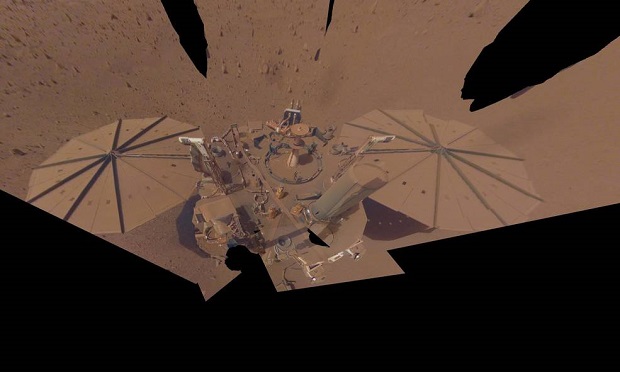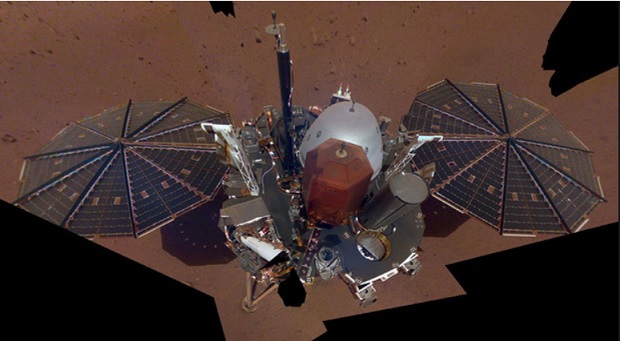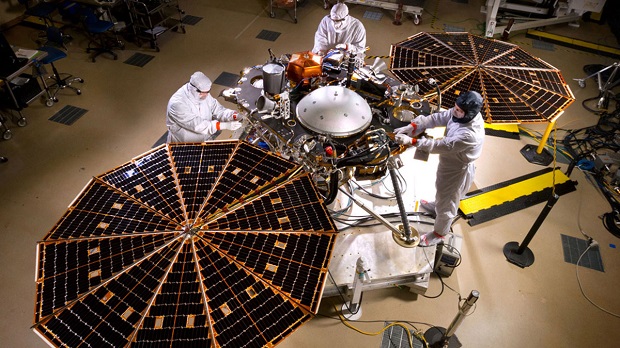
NASA InSight retires: After 4 years on Mars, spacecraft stops communicating
NASA's InSight mission has ended after more than four years of collecting unique scientific data on the planet Mars. Dispatchers at the agency's Jet Propulsion Laboratory (JPL) in Southern California, after two consecutive attempts, were unable to contact the spacecraft and concluded that the solar-powered probe had run out of energy and had retired.
The last communication session with the probe, according to NASA, was held on December 15, after which on December 18, the device did not reach the scheduled communication session.
The InSight probe has been on Mars for four years instead of the planned two. Over the past few months, mission leaders anticipated that the spacecraft may soon be out of service: its solar panels were covered with thick layers of dust, which blocked the sunlight needed to generate electricity. There was no way to remove this dust - neither manipulation nor even storms were able to clean the panels. By May 2022, InSight's solar panels were producing only about 10% of their original power output. In the latest "selfies" taken of the apparatus, you can also see that it is all covered in dust.

For comparison, here's what the vehicle looked like at the beginning of the mission:

In recent months, to save energy, experts have had to turn off all of the probe's instruments except the seismograph and camera.
What was InSight doing on Mars?
The InSight probe was launched from Vandenberg Air Force Base in California on May 5, 2018. It landed on Mars after a 6-month mission, on Nov. 26, 2018. About 10 weeks after landing, the probe began collecting scientific data to help learn more about the inner workings of Mars and its climate.
According to NASA, over four years the spacecraft has provided much useful data about the interior of Mars, its liquid core (which is much larger than the core of Earth - even considering the size difference between the two planets), the surprisingly variable remnants beneath the surface of its mostly extinct magnetic field and the large number of "Mars shocks." The SEIS seismograph installed on the planet's surface recorded over 1,300 "Mars shocks," some of which were relatively powerful. Some of these "Mars shocks" were of geological origin, while others were the result of collisions with meteorites.

The only failure was the drilling of Mars to a depth of 5 meters that was planned as part of the mission. The apparatus was equipped with a special tool provided by the German Aerospace Center (DLR), which was to plunge to a depth of 5 meters and pull a tether with sensors that would measure the temperature at the desired depth. This information would help scientists calculate how much energy was left by the formation of the planet.
The tool, nicknamed the "mole," was designed to drill loose sandy soil, but the soil around InSight was unexpectedly hard, and the sensors had to be placed at a depth of 40 cm. This part of the mission was not a complete failure, as the sensors still collected a lot of useful information, which will come in handy in future missions.
- Related News
- "AMADEE-24" Mars Analog Research Mission in Armash came to an end
- NASA creates new generation solar sail: What is it for?
- Flying object resembling surfboard was detected in Moon’s orbit: What is it in fact?
- Total solar eclipse on April 8, 2024: The most impressive photos
- Total eclipse of Sun will take place today: From which parts of the country will it be seen?
- Amateur astronomer from Crimea discoves potentially dangerous asteroid for Earth
- Most read
month
week
day
- iPhone users are advised to disable iMessage: What risks are hidden in it? 1402
- New Macs based M4 chip will get up to 512 GB of integrated memory, M4 is expected to be released in late 2024 1145
- Problems with Android 15: NFC contactless payments no longer work on smartphones with updated operating systems 1093
- Pavel Durov gives interview to Tucker Carlson: From 3-hour interview, less than hour appears in final version 979
- What are the best selling smartphones in the world? 862
- AMD Ryzen 7 processor, 24 GB of RAM and only $550: Mechrevo presents inexpensive and powerful laptop (photo) 758
- Key Google Pixel feature will soon be available on iPhone as well 752
- The 5 most controversial buildings ever built: Bold design or complete failure? (photo) 750
- Wildberries Travel service is already available for Armenia and other CIS countries 738
- Black Shark smart ring from Xiaomi to have interesting characteristics and phenomenal autonomy: 180 days of operation without recharging (photo) 725
- Read also
- Archive








